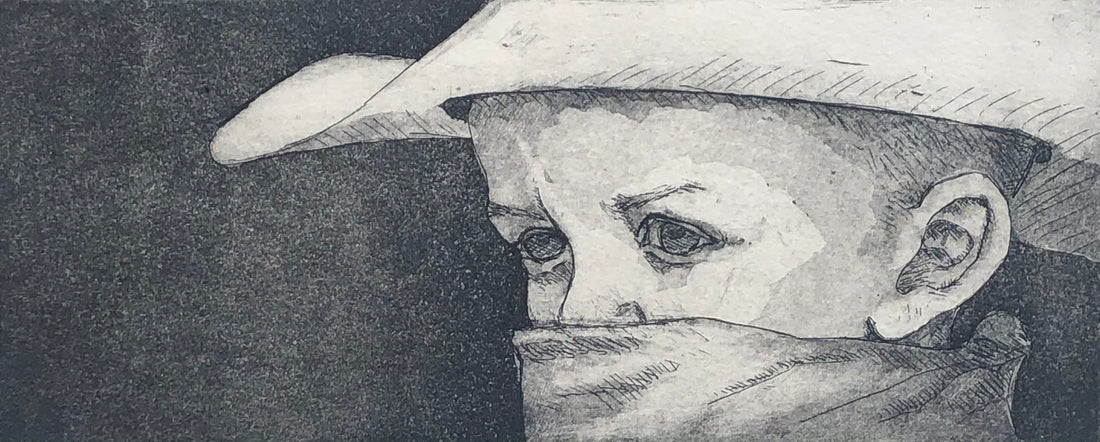Printmaking involves a matrix, which the artist creates, this can be made from wood, stone, linoleum, metal, or various other materials. The matrix is then inked up and printed onto a substrate (most commonly paper). There are NO copies and NO originals, only editions, which are pulled from the matrix each time it is inked up. So, if a print as an edition of 10, this means that the matrix was inked up 10 different times and 10 different impressions were made, no more. The type of paper used, the pressure of the press (or hand pressure if it was printed by hand) and the consistency of the ink all affect how each edition turns out.
So what is ink? This is not the ink found in your pens! Essentially it contains the same pigments and binders as oil paint, but has way more pigment and less binder. As a result, ink is pretty thick and very concentrated in color.
Relief printing is one of the oldest forms of printmaking and basically functions as a large stamp. Images are typically carved into wood (woodcut) or linoleum (linocut), and a roller is used to apply ink evenly over the surface of the matrix. Those areas cut away will not take up ink. An impression is then made from the matrix. This can be done many times with different reliefs and various colored inks to create intricate images.

This woodcut was made with three different matrixes in order to use three colors to create the image.
Intaglio printing uses metal as a matrix and the lines etched into the plate are what are printed. Ink is pressed down into the etched lines of the matrix, then the ink on the surface of the plate is wiped away. The paper typically needs to be damp in order to squish down into the etched lines to grab the ink. This usually requires higher pressure than relief printing. As such a press is needed, whereas relief printing can be done by hand.

This intaglio print was created by using aquatint to create large areas of solid color. In order to do this, small pit marks had to be made in these areas. This was done by applying small dots of resin over the plate and then allowing acid to eat away at the places that I wanted to be dark.
Lithography, my personal favorite because gestural lines can be made easily, isn’t as old as relief and Intaglio. It was discovered in 1798 when a German playwright was trying to find a way to duplicate his scrips cheaply. He accidentally spilled some wine onto the limestone he as practicing writing backwards on. In case this didn’t tip you off, the impression made from a matrix will be its mirror image regardless of the material used to create the matrix. Lithography works by using chemical reactions on the surface of the stone. A very basic way to explain it is by making use of acids and greasy crayons to tell the stone where to take up ink, which is greasy, and where to repel it. To remove the image from the stone, it is just ground off, and a new image can be drawn onto the stone.

The black marks on this print are from lithography. I used a monoprint technique to apply the blue color.
Well, I think that is enough for now. Until text time, stay healthy and happy!
